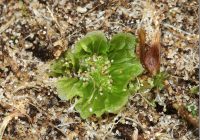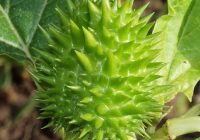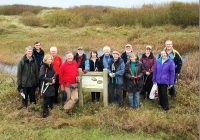Dr Phil Smith’s Wildlife Notes
October 2017
October is supposed to be our wettest month but, with measurable precipitation on only nine days, this time it did not live up to its reputation. Confounding the forecasters, one of two named storms produced no rain at all! The trend for mild autumns continued, with several warm spells and no frost at all. Regularly monitoring of the dune water-table showed that it started to rise, as would be expected, surface-water appearing in the deepest slacks but not in the Devil’s Hole, which remained stubbornly dry.
The importance of the Sefton dunes for mosses and liverworts (bryophytes) was reinforced when expert bryologist Des Callaghan led a fascinating training-course on 5th organised by the Gems in the Dunes project. Fourteen local enthusiasts were shown an enormous population of the nationally rare Sea Bryum on the southern part of Birkdale Green Beach, where there is more of this species than in all its other British localities put together. Several other mosses here included the rare and endemic Dyffryn Bryum, first described for science in 2003 by David Holyoak at Morfa Dyffryn in Wales. Des also guided us to the Petalwort, another Sefton Coast keystone species, at a known haunt in the northern Birkdale frontal dunes. This tiny liverwort has greatly declined following overgrowth of vegetation in dune-slacks due to fewer Rabbits.
My developing interest in these “lower” plants led to a trip to Ainsdale Sand Dunes National Nature Reserve with Joshua Styles on 29th. We recorded about 30 species of bryophytes in a couple of hours, including Lustrous Bog-moss (Sphagnum subnitens) which was thought to be extinct on the Sefton Coast.
The warm weather encouraged some late summer insects, a walk through the Ravenmeols Woods on 14th being enlivened by several Red Admirals and a Comma on the Ivy, at least five Common Darters perched on logs warmed by the sun. I also spotted a very late Wall butterfly and a colourful immature Hawthorn Shieldbug. A hundred Jackdaws were noisily mobbing a Buzzard over Cabin Hill, while attractive flower-spikes of Evening-primroses lined the sandy paths. The following day, Birch Shieldbugs were numerous on both oak and birch at Freshfield Dune Heath Nature Reserve, where I also recorded a single Green Shieldbug. Other interesting sightings were Thorn-apple, with its strange spiky fruits, found by Patricia Lockwood at Montagu Road, Freshfield and, nearby, a large plant of New Zealand Flax, a garden escape that had not been recorded before on the Sefton Coast.
Several “good” birds were reported during the month. Westerly gales in the first week brought Leach’s Petrels close inshore, while on 9th an American Golden Plover and Long-billed Dowitcher were found at Crossens Marsh, both having crossed the Atlantic. I went the following day but, due to repeated disturbance by a Peregrine, only managed to catch up with the plover, which was a new “tick” for me. Marshside and Crossens marshes were covered in birds, including thousands of Pink-footed Geese, at least 1000 Black-tailed Godwits, hundreds of Golden Plovers, three Curlew Sandpipers and five Cattle Egrets. Appropriately enough, the latter were following the cattle that graze the reclaimed marsh in autumn and winter. Formerly a great rarity, the first Cattle Egret for Lancashire was recorded as recently as 1999; it is now seen annually in the region, having begun breeding in Britain in 2008 (Somerset) and in Cheshire in 2016. The Dowitcher was joined by another later in the month. I missed them on 27th but was entertained by a Greenshank and three Avocets, the latter unusually late.
Another excellent find was the Cuckoo that Andrew Spottiswood reported on the Ainsdale dunes for twelve days up to 15th October. The previous latest ever in “Lancashire” was on 29th September 1975. He also found arguably the best bird of the month, a Red-breasted Flycatcher, in willows at Ainsdale Sand-dunes Local Nature Reserve on 24th. Only nine of this Eastern Europe and Asian vagrant have ever been seen in our region, the last one being in 2001 at Blackpool. Needless to say, it had gone when I visited the day after. I noted a few common birds, said “hello” to the Redpoll Cattle doing a great job grazing down the rank vegetation and checked the two bushes of the very rare hybrid Don’s Willow I found here a few years ago.
The continuing presence of our specialised duneland flora and fauna depends on habitat management to control invasive plants like Sea Buckthorn. Our hardy and enthusiastic “Buckthorn Bashers” were therefore mobilised again for weekly events near Sands Lake. Excellent turnouts of up to 16 volunteers meant we were able to cut large amounts of regrowth, especially in slacks rich in Marsh Helleborines and the iconic Grass-of-Parnassus. Andrew Hampson of Gems in the Dunes found a sizeable population of Petalwort in one of the slacks we cleared several years ago, providing solid justification for all the hard work.




